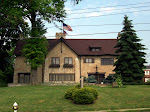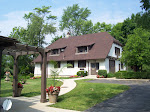
Mary Ann Campana
Excerpted from The Italians of Youngstown and the Mahoning Valley, Ohio by Joseph Louis Sacchini
Born in Italy, Mary Ann Campana immigrated to Youngstown in 1921. She enrolled in the Youngstown schools attending Oak Street Elementary, Lincoln School and East High School. While working at a five and ten cent store after graduation, she saved part of her earnings for flying lessons and at 18 became Ohio’s first licensed woman teenage pilot. On Sunday, June 4, 1933 Mary Ann set the world’s light airplane endurance record of 12 hours, 27 minutes flying over Youngstown and surrounding communities. She prepared for 5 months and had 44 hours of flight experience. Her aircraft was a Taylor Cub Airplane with a 40 horsepower Continental engine; she had 40 gallons of gasoline and no parachute. Severe electrical storms forced her to land.
Mary Ann Campana was a true pioneer in the field of aviation for women which in the early years was male dominated. In 1993 an Ohio Historical Marker was placed at the Youngstown Warren Regional Airport in honor of her aeronautical and business accomplishments. Ms. Campana resides in Boardman.
Excerpted from The Italians of Youngstown and the Mahoning Valley, Ohio by Joseph Louis Sacchini
Born in Italy, Mary Ann Campana immigrated to Youngstown in 1921. She enrolled in the Youngstown schools attending Oak Street Elementary, Lincoln School and East High School. While working at a five and ten cent store after graduation, she saved part of her earnings for flying lessons and at 18 became Ohio’s first licensed woman teenage pilot. On Sunday, June 4, 1933 Mary Ann set the world’s light airplane endurance record of 12 hours, 27 minutes flying over Youngstown and surrounding communities. She prepared for 5 months and had 44 hours of flight experience. Her aircraft was a Taylor Cub Airplane with a 40 horsepower Continental engine; she had 40 gallons of gasoline and no parachute. Severe electrical storms forced her to land.
Mary Ann Campana was a true pioneer in the field of aviation for women which in the early years was male dominated. In 1993 an Ohio Historical Marker was placed at the Youngstown Warren Regional Airport in honor of her aeronautical and business accomplishments. Ms. Campana resides in Boardman.






